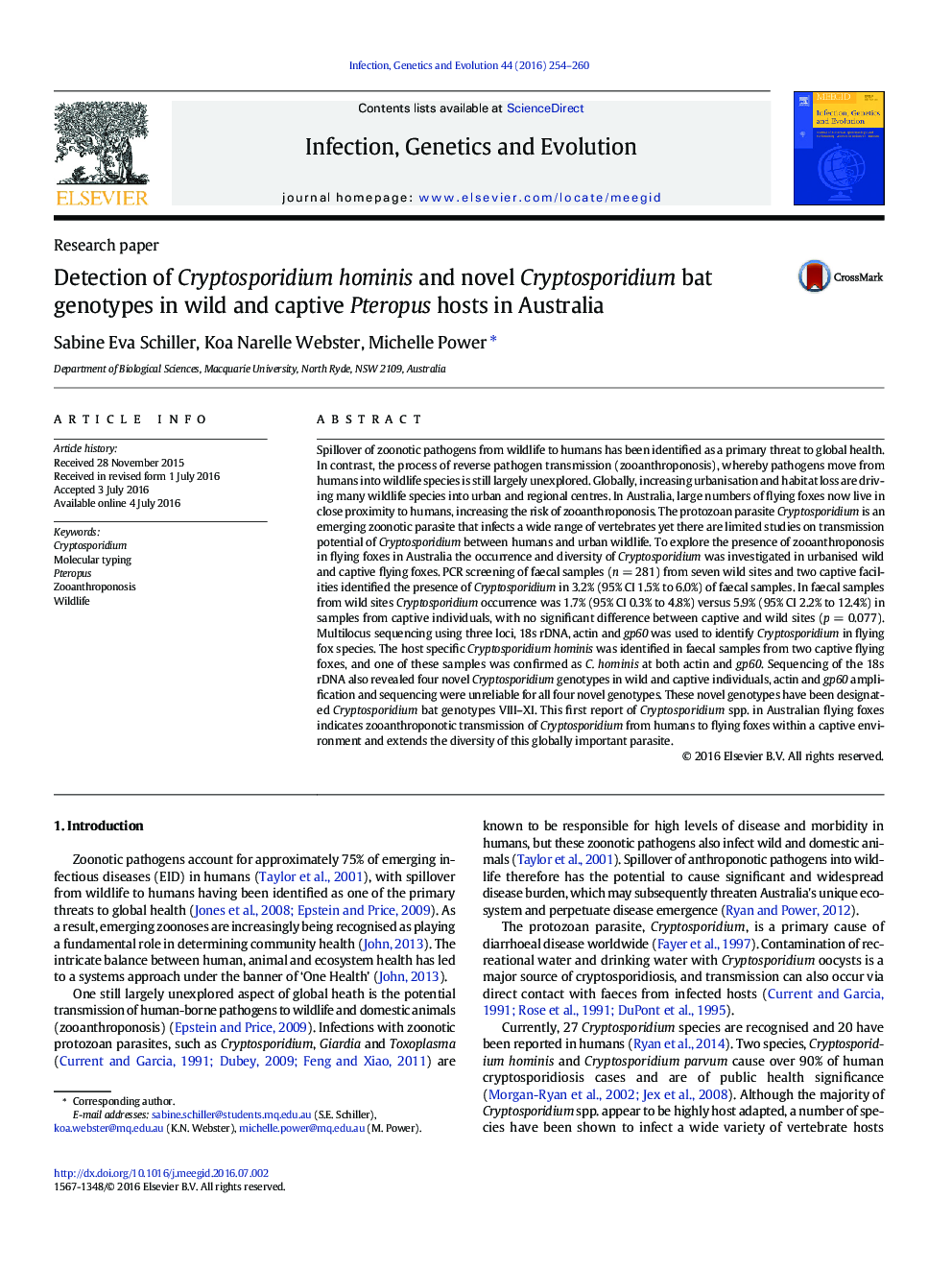| کد مقاله | کد نشریه | سال انتشار | مقاله انگلیسی | نسخه تمام متن |
|---|---|---|---|---|
| 5908143 | 1570159 | 2016 | 7 صفحه PDF | دانلود رایگان |
- Habitat loss has resulted in increased urbanised flying fox populations.
- Increased contact rates at the human/flying fox interface may facilitate pathogen spillover.
- Four novel Cryptosporidium genotypes identified in Australian flying foxes
- Findings indicate zooanthroponotic pathogen transmission of Cryptosporidium hominis in Australian flying foxes.
Spillover of zoonotic pathogens from wildlife to humans has been identified as a primary threat to global health. In contrast, the process of reverse pathogen transmission (zooanthroponosis), whereby pathogens move from humans into wildlife species is still largely unexplored. Globally, increasing urbanisation and habitat loss are driving many wildlife species into urban and regional centres. In Australia, large numbers of flying foxes now live in close proximity to humans, increasing the risk of zooanthroponosis. The protozoan parasite Cryptosporidium is an emerging zoonotic parasite that infects a wide range of vertebrates yet there are limited studies on transmission potential of Cryptosporidium between humans and urban wildlife. To explore the presence of zooanthroponosis in flying foxes in Australia the occurrence and diversity of Cryptosporidium was investigated in urbanised wild and captive flying foxes. PCR screening of faecal samples (n = 281) from seven wild sites and two captive facilities identified the presence of Cryptosporidium in 3.2% (95% CI 1.5% to 6.0%) of faecal samples. In faecal samples from wild sites Cryptosporidium occurrence was 1.7% (95% CI 0.3% to 4.8%) versus 5.9% (95% CI 2.2% to 12.4%) in samples from captive individuals, with no significant difference between captive and wild sites (p = 0.077). Multilocus sequencing using three loci, 18s rDNA, actin and gp60 was used to identify Cryptosporidium in flying fox species. The host specific Cryptosporidium hominis was identified in faecal samples from two captive flying foxes, and one of these samples was confirmed as C. hominis at both actin and gp60. Sequencing of the 18s rDNA also revealed four novel Cryptosporidium genotypes in wild and captive individuals, actin and gp60 amplification and sequencing were unreliable for all four novel genotypes. These novel genotypes have been designated Cryptosporidium bat genotypes VIII-XI. This first report of Cryptosporidium spp. in Australian flying foxes indicates zooanthroponotic transmission of Cryptosporidium from humans to flying foxes within a captive environment and extends the diversity of this globally important parasite.
219
Journal: Infection, Genetics and Evolution - Volume 44, October 2016, Pages 254-260
